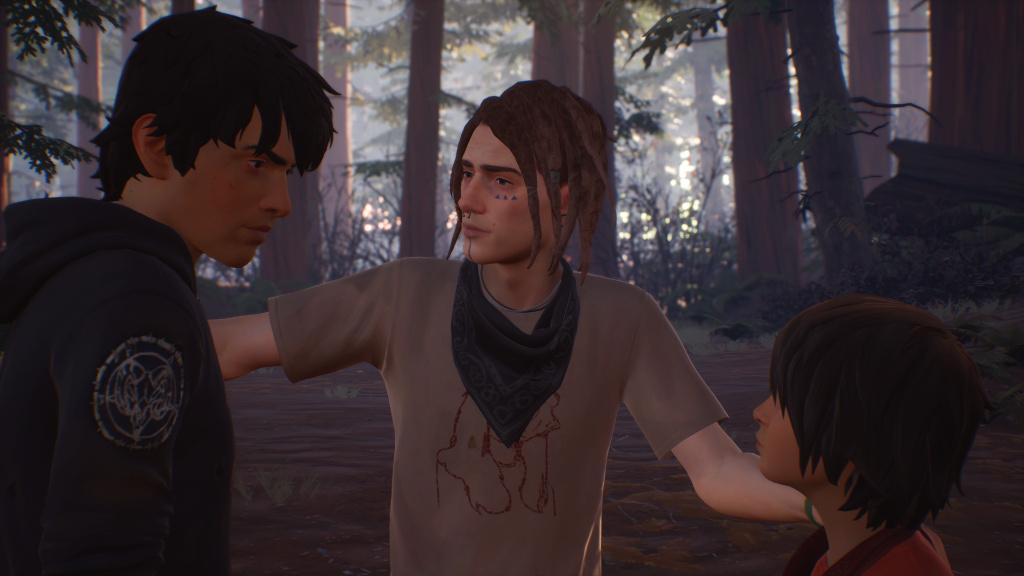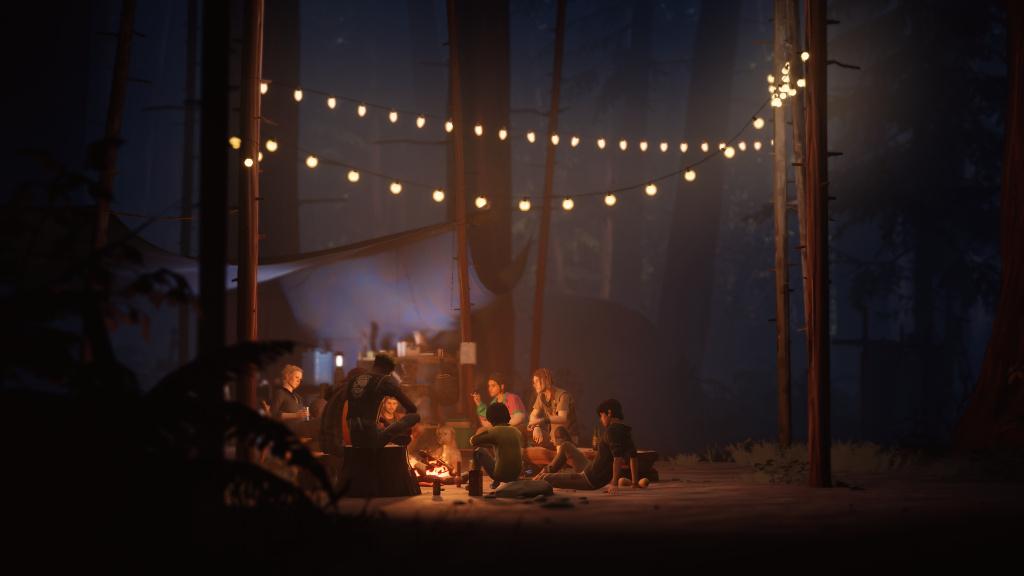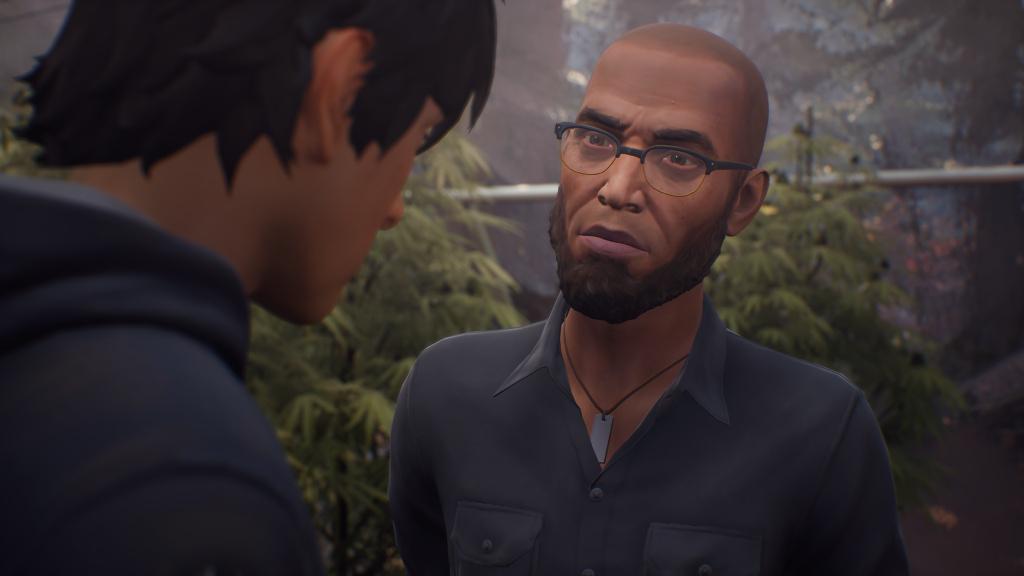Life is Strange 2 makes you feel like a terrible parent, but that's the point
Lead writer Jean-Luc Cano talks parenting, researching Humboldt County, and the different approach to writing Life is Strange 2.

This interview discusses some major story spoilers.
Daniel is growing up faster than any child should. We've been living off the grid in the vast Humboldt County forest for the last month, working as trimmers on an illegal marijuana farm. The tent we stole from the convenience store back in Washington is now well-worn, just like our clothes. I wake up, disheveled, and walk across our small commune to find Finn encouraging Daniel to throw a knife into a target painted on a tree. I'm not exactly thrilled about this. Finn gives me bad vibes, and I don't want Daniel hanging around him.
With each episode of Life is Strange 2, being a parent to your younger brother becomes more complicated. "Should I feel like I'm screwing this kid up?" I asked lead writer Jean-Luc Cano during our interview. He told me yes, I should feel that way. That's the point of Life is Strange 2; parenting is complicated enough when there's a generation gap, but putting aside your own teenage ambitions to be a dad to your younger brother while on the run from law enforcement? I don't think that's covered in any parenting book.
In the first Life is Strange, you're responsible for yourself. As Max, some of your decisions affect others, like Chole, but it directly influences the trajectory of your story. In Life is Strange 2, all your decisions are focused on Daniel. Everything you decide has positive or negative consequences for him. Teaching him one thing early on in the game may result in a completely opposite outcome than what you intended. Cano and the rest of the team wanted to create a greater emotional impact on the player by having their choices affect someone else's life. Even the smallest of choices can have varying effects on Daniel.
This made the writing process itself more difficult compared to the first game. "With Max, you can see the consequences of your actions really fast," said Cano. "In Life is Strange 2, it's not really visible from the beginning, but it will still shape the behavior of Daniel, and his behavior will change a lot from episode one to five."

It not just one of your decisions that will ultimately shape Daniel into the person he becomes by the end of the game. Sometimes you think you've made a good parenting decision, but you can't control the choices of others, like Finn—and when a kid idolizes another adult-figure instead of you, you can automatically become the bad guy. It's these difficult, morality-steeped choices that Cano wanted to put into the theme of the Life is Strange 2: Education.
"Daniel wants to make his own decisions and sometimes Sean doesn't want him to do it, but Daniel wants to do it anyways. There's a lot of tension and a lot of friction between Sean and Daniel, and we wanted the last scene of episode three to encompass all of these things."
Keep up to date with the most important stories and the best deals, as picked by the PC Gamer team.
That's why episode three ends with a shard of glass in Sean's eye and with Daniel missing. Feeling helpless and out of control of the situation is probably one of the worst places for a parent to be. I'm not a parent in real life, but the game definitely made me feel that way.
But Cano's personal experience as a parent not only influenced some of the story in Life is Strange 2, but also the first game. "Life is Strange is a coming-of-age tale, and I wrote it when I became a father. And maybe that's why I wrote Life is Strange 2, to come up with this idea of my daughter as she grows up." Every decision he makes, every word he says, his daughter will look to him as an example. It's a part of her education, as Cano puts it, as she grows into adulthood.
The theme could still have come across if they made Sean older, but there's naturally more tension in creating a teenage character who is forced to be a parent to their younger sibling way before they are ready. The idea of what it means to evolve as a parent comes off stronger. The moral choices in Life is Strange 2 are difficult to make, but that's the intention—to try to make the right decision for Daniel even as he's showing how much he hates you by levitating a giant tree trunk out of a lake. (Kids' emotions can be scary, man.)

It's even harder to make moral choices when you're forced into a lifestyle that most would consider immoral for children. So when it came to choosing a location for episode three, sending Sean and Daniel to Humboldt County was a logical choice. When you're fugitives on the run, there's not much you can do to earn money legally. Working as trimmers on an illegal marijuana farm shielded by the dense Humboldt County forest was the perfect option. "We wanted to put Sean and Daniel in this situation. They have to accept the fact that they are working for dangerous people, but they have no choice if they want to go to Mexico."
While the team read books, watched documentaries, and did a lot of other internet research, the idea of the drifters, like Finn and Cassidy, came from a book called "A Period of Juvenile Prosperity" by photographer Mike Brodie, who documented his and others' experiences drifting around the United States via freight train. Cano and the team were amazed by Brodie's work, the feeling of freedom they felt when looking at his photos. They wanted to explore their lives, and so the characters they created intersected with other real life stories of grow operations in Humboldt County. It's here, working alongside Merrill and Big Joe, that I felt the real desperation of Sean and Daniel's situation, and by the end of the episode, I felt like I had destroyed Daniel's childhood for good. No matter how angry I was at him for disobeying me and getting us fired, no matter how much I wanted to protect him from the threat of emotional and physical violence, I felt like I failed Daniel as a brother and as a parent.
"We wanted to put Sean and Daniel in this situation. They have to accept the fact that they are working for dangerous people, but they have no choice if they want to get to Mexico."
The beginning of the episode foreshadows the end in some ways, with Daniel falling out of love with a watch his big brother gave him months before. The flashback scene at the beginning is there to make the player remember Sean and Daniel in their previous life, a life that seems like it happened years ago rather than a few short months. At the end of the flashback, Sean makes up with Daniel after a fight by giving him his watch—the watch we see Daniel has left behind in the tent once the story jumps back to present day. "It was there to show the player that Daniel has grown up and he's not the same Daniel as he was before."
When Daniel decides to put that watch back on later in the episode, there's a small moment of hope that maybe this kid is going to turn out alright. But there's no happy ending for Sean and Daniel in episode three. Finn will convince Daniel to break into Merrill's safe regardless, and someone will end up hurt or dead, maybe both, depending on the ending you get.
I asked Cano what's in store for us in the final two episodes, knowing full-well he won't give away any surprises. He and the rest of the writing team have had the full story written for a long time, but he does tell me that we could see other versions of Daniel based on our choices. "There's a version of Daniel who is nice to Sean, a version of Daniel who is neutral to Sean, and a version of Daniel who is angry at Sean."
I just hope that, at the end of the Diaz brothers' journey, I'll have shaped Daniel in such a way that he's at least neutral to me. Having him angry with me would break my heart.


